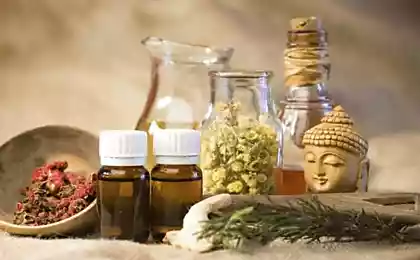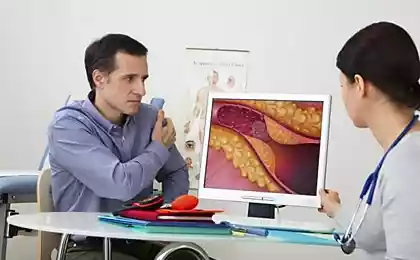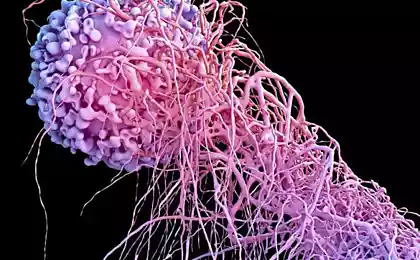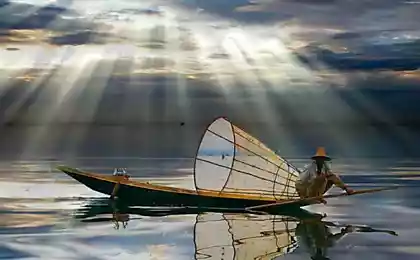638
Important! What clots in blood vessels: 3 main reasons
Probably everyone heard about the blood clots and thrombosis, but not everyone is aware of how it can be dangerous. It is the blood clot responsible for the development of killer diseases such as myocardial infarction and ischemic stroke. Also due to blood clots can develop gangrene, and the separation of it – a pulmonary embolism.
The blood clot what the blood clot
Very often in the media one can hear that the blood clot was the cause of death or that of a popular artist or filmmaker. At first glance, nothing wrong with this word there, but many wonder why it can be dangerous. So what is a blood clot. A thrombus is a blood clot that forms in a blood vessel or cavity of the heart. It consists of proteins, mainly fibrin, and can be wall or occlusive, i.e., completely closing the lumen of the vessel. Clogging blood clots often form in small blood vessels, whereas the wall – in the large veins of the lower extremities and cavities of the heart.
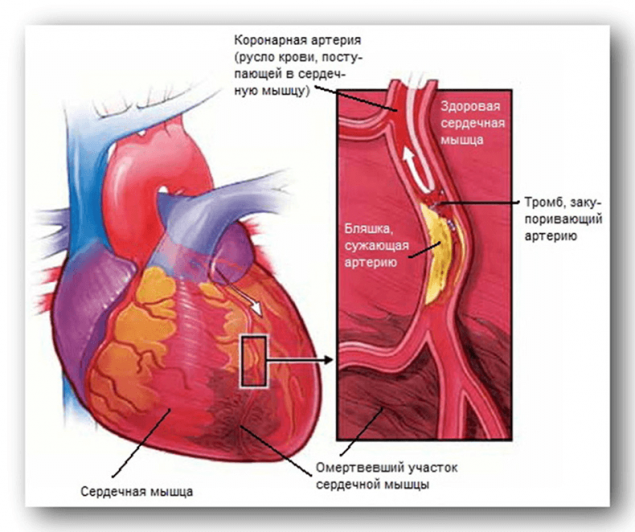
What clots
Thrombus formation is a protective reaction of the organism directed at stopping bleeding. We all know that in small cuts, the bleeding stops quickly enough, and this is due to the closure of damaged capillaries small blood clots. In violation of the process of thrombosis may be life threatening. For example, the death of the Tsarevich Alexei, who had hemophilia.
His body was not formed clots, so fatal to him was a small wound. But the reverse situation, in which increases the formation of blood clots, can be fatal.
There are three main reasons, causing clots in the blood vessels:
In some diseases (cancer, autoimmune), genetic defects of the coagulation system, as well as dehydration increases blood viscosity. Intravascular fluid becomes more viscous, causing clots.
The slow flow of blood through the veins as the result of a sedentary lifestyle and turbulent blood flow (branching of blood vessels for increased blood pressure) can contribute to thrombosis.
It should be remembered that a side effect of certain medications, e.g., oral contraceptives may be trombofilia. Therefore, self-prescribing may just be the thing that form blood clots.
The clot symptoms
Symptoms of a blood clot will vary, depending on the type of vessel in which it was formed.
Arterial thrombosis leads to the development of:
Therefore, when blood clot symptoms may be different, but always very serious.
Why the clot breaks away and what is dangerous
The movement of a blood clot within the cardiovascular system with blood flow.
This requires two basic conditions.
1. The clot should not be occlusive, i.e., freely accommodated within the vessel. Usually such blood clots are formed in veins of the legs and the heart cavity.
2. The blood velocity must be sufficient for removal of a blood clot.
The danger of migrating blood clots is that they can move considerable distances to fragmented and lead to blockage of a large number of vessels.
The most common example of detachment of a blood clot is a pulmonary embolism from the veins of the lower extremities. It would seem, is not the most serious disease (varicose and thrombophlebitis) can cause sudden death.
No one can say why the clot breaks off at precisely the moment when you least expect it. For example, the patient after the operation is recovering and preparing for discharge. He gets up and begins to collect things, but suddenly starts to choke and lose consciousness. Usually develops pulmonary embolism. In this regard, it is necessary to timely prevention and effective treatment of blood clots.

Prevention of blood clots
The main prevention of blood clots based on the principles:
Not only for the prevention of blood clots, but also to maintain the body in good shape, you need every day at least 30 minutes to devote to physical exercises. What kind is this load, everyone chooses. But more useful than a walk in the fresh air than in a stuffy gym.
It is also necessary to remember that the risk of blood clots in leg veins increases sharply when a prolonged stay in a forced position (for example, in the plane) and bed rest (e.g. after surgery). For the prevention of blood clots in these cases as often as possible to get up and walk around. Patients in the postoperative period justified the use of elastic bandaging of the legs.
To maintain the normal viscosity of the blood, your doctor may recommended to take Aspirin or Warfarin. They affect the different stages of thrombus formation and have their own strict indications and contraindications. Taking these drugs without doctor appointments can be very dangerous.
Treatment of blood clots
Treatment of blood clots in the first place depends on where it is located.
With arterial thrombosis should be prompt restoration of blood flow in the affected vessel. If the crash occurred in the brain, then the doctor gleichenia clots no more than 2-3 hours, if in the heart not more than 6 hours. The most resistant to malnutrition was tissue of the limbs and guts. There are two main methods of removing a blood clot.
1. Surgical technique, which involves
2. A therapeutic method
Consists of dissolving the clot with drugs (thrombolytics) administered intravenously.
Somewhat different treatment in venous thrombosis. Here all is determined by how high the danger of its detachment from the vessel wall.
When floating thrombus (free-floating in the lumen of the vessel) carry out the ligation of the vein or set a special trap for blood clots cava filter. To stabilize the clot you can use heparin or its analogues (fraxiparin, klexan).
The complete closure of the lumen of the vein you can apply medication that will dissolve the clot and in some cases will lead to the restoration of blood flow through the damaged vessel. These include heparin and warfarin. In rare cases, gleichenia use surgical clot removal of vein.
Tip often comes in the form of the disease
How to help psoas muscle: 3 exercises to relieve pain syndrome
Blood clots – as the medal which has two sides. On the one hand, it protects the body from bleeding, on the other, can lead to sudden death. It is therefore very important to know the basic symptoms of thrombosis, to get medical care.
It is also important preventive measures, consisting mainly in a healthy diet and moderate exercise. Do not forget about the risk of thrombosis during the forced inactivity (in the plane or after surgery). While justified by elastic bandaging of the legs or compression stockings.published
P. S. And remember, only by changing their consumption — together we change the world! ©
Source: heartbum.ru/trombi/
The blood clot what the blood clot
Very often in the media one can hear that the blood clot was the cause of death or that of a popular artist or filmmaker. At first glance, nothing wrong with this word there, but many wonder why it can be dangerous. So what is a blood clot. A thrombus is a blood clot that forms in a blood vessel or cavity of the heart. It consists of proteins, mainly fibrin, and can be wall or occlusive, i.e., completely closing the lumen of the vessel. Clogging blood clots often form in small blood vessels, whereas the wall – in the large veins of the lower extremities and cavities of the heart.

What clots
Thrombus formation is a protective reaction of the organism directed at stopping bleeding. We all know that in small cuts, the bleeding stops quickly enough, and this is due to the closure of damaged capillaries small blood clots. In violation of the process of thrombosis may be life threatening. For example, the death of the Tsarevich Alexei, who had hemophilia.
His body was not formed clots, so fatal to him was a small wound. But the reverse situation, in which increases the formation of blood clots, can be fatal.
There are three main reasons, causing clots in the blood vessels:
- The change of the vascular wall.
- Increased viscosity of blood;
- Impaired blood flow.
In some diseases (cancer, autoimmune), genetic defects of the coagulation system, as well as dehydration increases blood viscosity. Intravascular fluid becomes more viscous, causing clots.
The slow flow of blood through the veins as the result of a sedentary lifestyle and turbulent blood flow (branching of blood vessels for increased blood pressure) can contribute to thrombosis.
It should be remembered that a side effect of certain medications, e.g., oral contraceptives may be trombofilia. Therefore, self-prescribing may just be the thing that form blood clots.
The clot symptoms
Symptoms of a blood clot will vary, depending on the type of vessel in which it was formed.
Arterial thrombosis leads to the development of:
- myocardial infarction,
- stroke
- gangrene of the limb,
- necrosis of the intestine.
- pain in the region of the heart during a heart attack,
- neurological impairment in stroke,
- pain, numbness, cold and discoloration of the limb and
- intestinal obstruction and abdominal pain.
- thrombophlebitis of lower extremities,
- thrombosis of the portal vein of the liver,
- thrombosis of jugular vein and venous sinus of the brain.
- Swelling, pain, redness of the affected area of the foot;
- Abdominal pain, symptoms of pancreatitis, cirrhosis of the liver;
- Pain in the neck, blurred vision.
Therefore, when blood clot symptoms may be different, but always very serious.
Why the clot breaks away and what is dangerous
The movement of a blood clot within the cardiovascular system with blood flow.
This requires two basic conditions.
1. The clot should not be occlusive, i.e., freely accommodated within the vessel. Usually such blood clots are formed in veins of the legs and the heart cavity.
2. The blood velocity must be sufficient for removal of a blood clot.
The danger of migrating blood clots is that they can move considerable distances to fragmented and lead to blockage of a large number of vessels.
The most common example of detachment of a blood clot is a pulmonary embolism from the veins of the lower extremities. It would seem, is not the most serious disease (varicose and thrombophlebitis) can cause sudden death.
No one can say why the clot breaks off at precisely the moment when you least expect it. For example, the patient after the operation is recovering and preparing for discharge. He gets up and begins to collect things, but suddenly starts to choke and lose consciousness. Usually develops pulmonary embolism. In this regard, it is necessary to timely prevention and effective treatment of blood clots.

Prevention of blood clots
The main prevention of blood clots based on the principles:
- Healthy eating;
- Active lifestyle;
- Maintaining normal blood viscosity.
Not only for the prevention of blood clots, but also to maintain the body in good shape, you need every day at least 30 minutes to devote to physical exercises. What kind is this load, everyone chooses. But more useful than a walk in the fresh air than in a stuffy gym.
It is also necessary to remember that the risk of blood clots in leg veins increases sharply when a prolonged stay in a forced position (for example, in the plane) and bed rest (e.g. after surgery). For the prevention of blood clots in these cases as often as possible to get up and walk around. Patients in the postoperative period justified the use of elastic bandaging of the legs.
To maintain the normal viscosity of the blood, your doctor may recommended to take Aspirin or Warfarin. They affect the different stages of thrombus formation and have their own strict indications and contraindications. Taking these drugs without doctor appointments can be very dangerous.
Treatment of blood clots
Treatment of blood clots in the first place depends on where it is located.
With arterial thrombosis should be prompt restoration of blood flow in the affected vessel. If the crash occurred in the brain, then the doctor gleichenia clots no more than 2-3 hours, if in the heart not more than 6 hours. The most resistant to malnutrition was tissue of the limbs and guts. There are two main methods of removing a blood clot.
1. Surgical technique, which involves
- bypass,
- stenting and
- mechanical removal of the thrombus.
2. A therapeutic method
Consists of dissolving the clot with drugs (thrombolytics) administered intravenously.
Somewhat different treatment in venous thrombosis. Here all is determined by how high the danger of its detachment from the vessel wall.
When floating thrombus (free-floating in the lumen of the vessel) carry out the ligation of the vein or set a special trap for blood clots cava filter. To stabilize the clot you can use heparin or its analogues (fraxiparin, klexan).
The complete closure of the lumen of the vein you can apply medication that will dissolve the clot and in some cases will lead to the restoration of blood flow through the damaged vessel. These include heparin and warfarin. In rare cases, gleichenia use surgical clot removal of vein.
Tip often comes in the form of the disease
How to help psoas muscle: 3 exercises to relieve pain syndrome
Blood clots – as the medal which has two sides. On the one hand, it protects the body from bleeding, on the other, can lead to sudden death. It is therefore very important to know the basic symptoms of thrombosis, to get medical care.
It is also important preventive measures, consisting mainly in a healthy diet and moderate exercise. Do not forget about the risk of thrombosis during the forced inactivity (in the plane or after surgery). While justified by elastic bandaging of the legs or compression stockings.published
P. S. And remember, only by changing their consumption — together we change the world! ©
Source: heartbum.ru/trombi/


